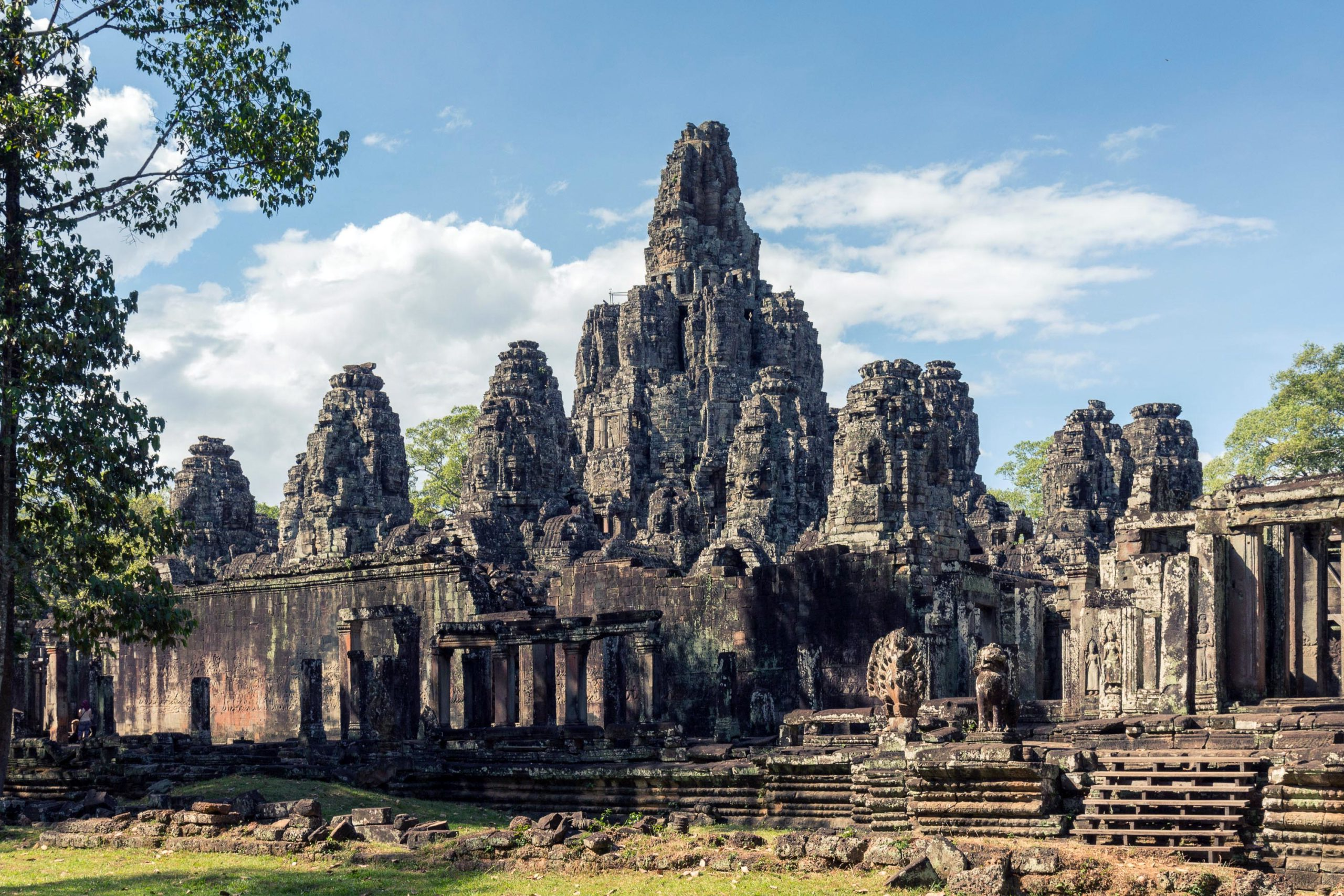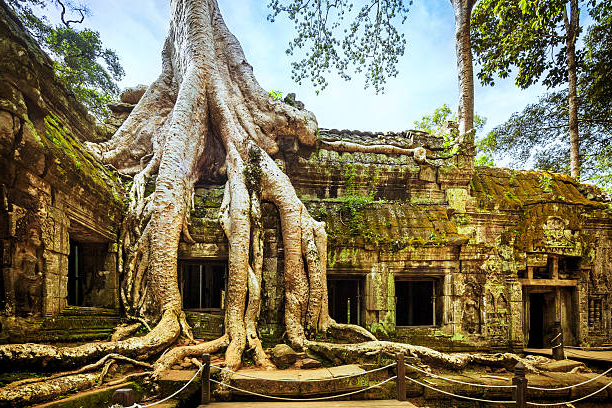Unveiling Southeast Asian Treasures: The Temples of Cambodia’s Angkor Complex
In Cambodia, the majestic Angkor Wat mesmerizes visitors with its architectural brilliance and historical significance. Rising from the dense jungle, this iconic temple complex offers a glimpse into the rich heritage of the Khmer Empire. As you trace the intricate carvings that depict ancient tales, you cannot help but feel the spiritual aura enveloping this remarkable site. The experience of wandering through Ta Prohm, where towering silk-cotton trees reclaim their territory amidst crumbling ruins, highlights nature’s resilience and the passage of time. At Bayon, the enigmatic stone faces provoke deep contemplation about the mysteries of the Khmer civilization. Engaging with local artisans provides an opportunity to appreciate the intricate craftsmanship that is a hallmark of traditional Khmer art. A journey through Cambodia’s temples is not just a visit; it is a profound encounter with history, culture, and spirituality.

The ancient temples of Angkor, located in the heart of Cambodia, stand as a testament to the grandeur of the Khmer Empire, which thrived in Southeast Asia for centuries. The Angkor complex, often referred to as the “City of Temples,” is a treasure trove of cultural heritage and architectural wonders that captivate visitors from around the globe. Spanning over 400 square kilometers, this archaeological site is home to numerous temples, each with its own unique charm and historical significance. From the 9th to the 15th century, the Khmer Empire flourished, leaving behind a legacy that can be witnessed through the intricate craftsmanship and architectural brilliance of its temples.

Discovering the Iconic Temples of Angkor
Among the many remarkable structures within the Angkor complex, Angkor Wat stands out as the crown jewel. Renowned as the world’s largest religious monument, this breathtaking edifice exemplifies the zenith of Khmer architecture and serves as a symbol of Cambodia itself. Upon entering Angkor Wat, visitors are greeted by intricate carvings that depict scenes from Hindu mythology, accompanied by stunning bas-reliefs that narrate the tales of ancient civilizations. Climbing to the top of the central tower rewards you with a panoramic view of the sprawling temple complex, a sight sure to leave you in awe of the architectural prowess of the Khmer Empire.
The Architectural Marvel of Angkor Wat
The layout of Angkor Wat is designed to represent an earthly model of the universe in stone. The central tower symbolizes Mount Meru, the center of the universe in Hindu cosmology, surrounded by four smaller towers representing the surrounding mountain ranges. The temple’s moat signifies the ocean that encircles the world. As you explore the temple grounds, pay close attention to the stunning apsaras—celestial dancers carved into the walls—that showcase the artistry and skill of Khmer craftsmen.
Embarking on a Journey through Bayon Temple
Another must-visit temple in the Angkor complex is Bayon, famous for its towering stone faces and intricate bas-reliefs. Each face, with its serene smile, seems to watch over the complex, inviting visitors to ponder the mysteries of the past. As you wander through the maze-like corridors and ascend the steep stairs, you will feel a sense of adventure and discovery. The carvings on the walls depict scenes from daily life, battles, and religious ceremonies, providing a vivid insight into the vibrant history of the Khmer Empire.
The Enigmatic Faces of Bayon
The faces at Bayon are often interpreted as representations of Avalokiteshvara, the bodhisattva of compassion, or perhaps a depiction of King Jayavarman VII, who commissioned the temple. This dual interpretation adds to the mystique, making Bayon a favorite among visitors and photographers alike. Each angle reveals a new perspective, making it a photographer’s paradise.
Ta Prohm: Nature’s Embrace of History
For those seeking a more off-the-beaten-path experience, Ta Prohm is an absolute must. Unlike other temples that have undergone extensive restoration, Ta Prohm has been left in its natural state, with massive trees growing through the ancient walls. This juxtaposition of nature and architecture creates a mystical atmosphere that feels like a scene from a fairy tale. Walking through the temple grounds, you will feel as though you have stepped into a forgotten world, where time stands still and nature reigns supreme.
The Tomb Raider Effect
Ta Prohm gained international fame after being featured in the movie “Tomb Raider,” which has only increased its allure. Visitors flock to this temple not only to admire its beauty but also to recreate iconic movie scenes. The intertwining roots of the silk-cotton trees and the crumbling stones create a surreal landscape that captivates the imagination and evokes a sense of wonder.
Experiencing the Rich Cultural Heritage of Cambodia
Exploring the temples of Cambodia’s Angkor complex is more than just a visual feast; it is an opportunity to engage with the rich cultural heritage of the Khmer people. Interacting with local artisans provides insight into the traditional craftsmanship that has been passed down through generations. From silk weaving to stone carving, these artisans preserve the skills and techniques that define Khmer art.
Supporting Local Artisans
Many workshops and galleries near the temples allow visitors to witness the creation of traditional handicrafts firsthand. Purchasing souvenirs directly from artisans not only supports their livelihoods but also ensures that the rich heritage of Khmer culture continues to thrive. Engaging with these local communities adds depth to your experience, allowing you to connect with the history and culture of Cambodia on a more personal level.
Practical Tips for Visiting Angkor
To make the most of your visit to the Angkor complex, consider the following tips:
- Plan Your Visit: The best time to visit Angkor is during the dry season, from November to February, when temperatures are cooler and conditions are more favorable for exploration.
- Purchase a Pass: A multi-day pass allows you to explore the temples at your own pace. Consider a three-day pass for a comprehensive experience.
- Dress Appropriately: As a sacred site, visitors should dress respectfully, covering shoulders and knees. Comfortable footwear is essential for navigating the uneven terrain.
- Stay Hydrated: The heat can be intense, so carry water with you and take breaks to enjoy the stunning scenery.
- Hire a Guide: A knowledgeable guide can enhance your experience by providing historical context and stories about the temples.
Conclusion: A Journey Through Time
Exploring the temples of Cambodia’s Angkor complex is a journey back through time, unveiling the hidden secrets of Southeast Asia. The grandeur and beauty of these ancient structures testify to Cambodia’s rich cultural heritage and the remarkable achievements of the Khmer Empire. From the breathtaking Angkor Wat to the enigmatic Bayon and the enchanting Ta Prohm, each temple offers a unique experience filled with wonder and amazement. Whether you are a history enthusiast, an architecture lover, or simply seeking a spiritual retreat, the temples of Angkor await your discovery and appreciation.

